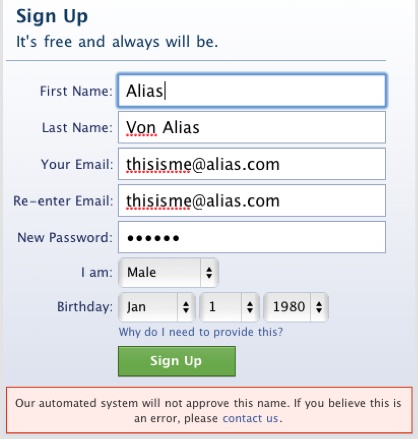Building Upon Real Identity
One of the most important concepts to understand about the social graph on Facebook is real identity. Facebook strongly believes in having its users build their profiles upon their true, real-life identities.
Unlike many social networking sites, which allow a person to refer to himself using an alias and withhold his personal information from the outside world, Facebook delivers an experience that is actually enriched as users share more of their real identities.
During the signup process, Facebook does a good job of enforcing this core concept, rejecting names that it suspects are aliases (Figure 2-3). Requiring users to input their sex and birthday also reflects the site’s emphasis on delivering a real-world experience to its user base.

Figure 2-3. Facebook signup screen, preventing an invalid user from creating an account
Real identity is also a good concept to keep in mind when you’re building systems on social networking containers. It is in your best interest to stick with leveraging profile systems that include information that can be traced back to an actual person, because this is what allows you to not only target an application to a specific person, but also to make it incredibly relevant for her.
Get Programming Social Applications now with the O’Reilly learning platform.
O’Reilly members experience books, live events, courses curated by job role, and more from O’Reilly and nearly 200 top publishers.

